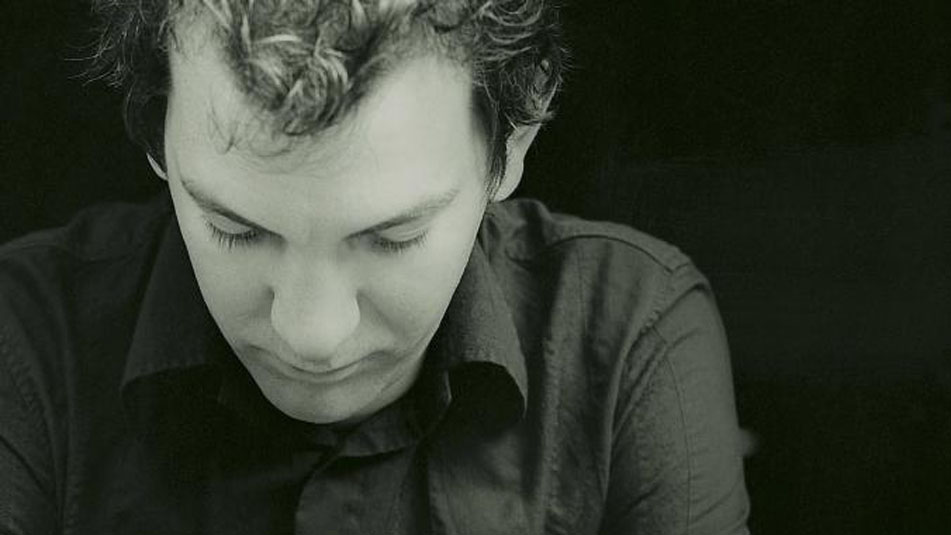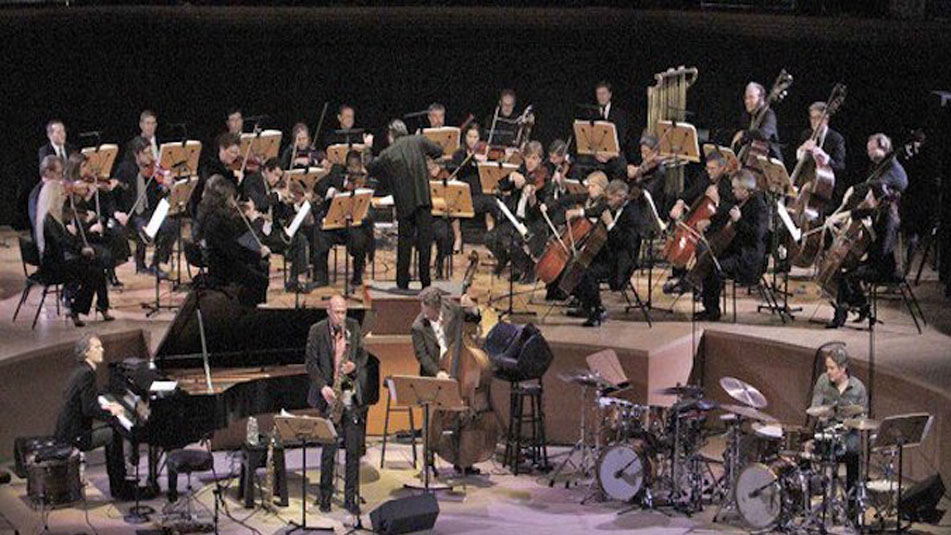IN HIS OWN WORDS
BRAD MEHLDAU oN HIGHWAY RIDER
September 27, 2016 | by Rusty Aceves

Brad Mehldau
Though there are numerous published reviews of Brad Mehldau's masterwork Highway Rider in major newspapers and music publications, there is no better source for the ideas and inspirations behind the piece than the eloquent words of Mehldau himself. We look back at what the composer and pianist had to say about his most ambitious project.
HIGHWAY RIDER by BRAD MEHLDAU
As an improvising jazz musician who also composes written music, I have been waiting for a while to make this record – waiting for everything to line up in my consciousness and come forward and present itself. The allure of jazz for me has been the opportunity for unshackled spontaneous expression. The challenge of jazz has been to not have this spontaneous format become a kind of orthodoxy. It can become an orthodoxy of arbitrary expression: In keeping the written material merely provisional and not fully fleshed out, the formal and motific contours of jazz expression often remain arbitrary. A certain type of expression – the more Beethoven kind of expression that achieves connections between the large scale and small scale elements – will not readily come to light. There are exceptions in jazz. One great one for me is Thelonious Monk, composer and improviser, and as I’ve written elsewhere, he is a huge model for me.
It is the motif’s narrative qualities specifically that are important. In the wordless abstract narrative of music, the motif is central to the work in the same way a theme is central to a novel. It is with us throughout the piece and becomes lodged in our memory; the meaning of it changes as the music unfolds, yet its identity does not change. For Highway Rider, I strived for a marriage between the non-arbitrary and the arbitrary – between this strong motific identity expressed in the written material and the more spontaneous expression afforded by the improvised material.
The arbitrary aspect of an improvised jazz solo is, of course, also its winning strength. A micro-narrative of a different sort will emerge from a worthy jazz solo. In comparison to written music, an improvised solo will express the intense, heightened subjectivity of the individual musician, reacting in real time to what he or she hears and feels. Jazz soloing, no matter how cohesively it fits with the music that surrounds it, is always for me a disruption of sorts: the best solos express an alluring incongruity with whatever given order there is. I waited for a while to make a record like “Highway Rider” because the interaction between the given order of music written with a high degree of specificity for a larger ensemble and the space allotted for the improvising soloist presents specific challenges that I finally felt ready to surmount only now.

Musicians, Orchestration:
The soloist besides myself on the record is Joshua Redman, and I felt strongly that he would be the person who could find a way to address the specificity of the written music and still disrupt the prevailing order. Josh, one of my favorite musicians, can do that for a few reasons. First, he has an extra-quick learning curve – he was hearing the strings and winds for the first time in the studio, and quickly was making intuitive decisions about how to interact with them – when to play over them, when to defer to them, when to ignore them. That was really impressive and a pleasure to witness. Second, he has a strong sense of shape in everything he plays – there is always a direction in his solos, a sense of a beginning and a destination. Finally, the emotional contours of Josh’s playing are rich and satisfying for me, and in any context, no matter how dense, he is always directly dealing with the feeling of the music first and foremost, always playing with passion. That is so important.
I chose Jeff Ballard, Matt Chamberlain, and Larry Grenadier for their creativity, but also, for their musical maturity, and by that I mean their ability to give the music what it needs. In some instances, that is by playing something very simple and repetitive; in some other instances, it means something more busy, in other cases, I needed something to interact with – something in my face so to speak. These guys always know which direction to go and then do so much to set the mood for everything immediately. The presence of Larry, Matt and Jeff was indispensable for this music and gives the record much of its character. Each one of them, while deferring to the music and allowing it to bloom, is also able to assert his own voice within that music, and that is a worthy achievement.
One piece of music that’s huge for me is Richard Strauss’ Metamorphosen. I’ve been looking at the score for years. It’s a unique score because each string player has a separate part. In most orchestral music, the strings are split into sections – violin 1, violin 2, violas, cellos and basses. The composer may call for the sections to be divided in two or sometimes three parts, but usually there are no more than 5 to 8 distinct voices in the strings. Strauss scored Metamorphosen for 23 strings exactly – 10 violins, 5 violas, 5 cellos and three basses – but gave each player an individual part: Instead of Violin 1 and 2, there is Violin 1, Violin 2, Violin 3, etc. all the way to Violin 10, and so on with the rest of the instruments. It’s like a mammoth chamber piece, but it’s an unmistakably orchestral sound. There are endless options – only a few players at once, one string soaring above all the rest, all the strings tutti, and so on. Of course there is the potential to write very densely, and Strauss’ piece is full of what I call “chunky” harmony. I used Strauss’ configuration of 23 strings on two of the pieces on “Highway Rider,” “Now You Must Climb Alone,” and at the beginning of “Always Departing.” For the other tracks with orchestra, the 23 strings remain but act more as sections, and in addition there are three French horns, one bassoon, and one contrabassoon. The exception is “Don’t Be Sad,” which has only one horn, no contrabassoon, and no basses.
Highway Rider is influenced by a bunch of music – a bunch of classical scores I’ve lived with for a while, jazz performances and pop songs. Different people might hear different things. In terms of the writing for the orchestra and the way that would mesh with the band, there are a few orchestrator/arrangers that I’ve listened to closely who worked specifically with singers, and they may have rubbed off a little on this record: Francois Rauber for his work with Jacques Brel, Bob Alcivar’s arrangements for Tom Waits, and Francis Hime’s orchestrations for Chico Buarque. The way they all wrap the instruments around the voice – keeping the individual personality of the singer in the forefront while still writing richly and imaginatively for the orchestra – is instructive. They offer great examples of how to use the orchestra in a modern setting more generally – the excitement for me in those records is the mix of the more “classically” beautiful orchestral sounds with the idiosyncratic vocal style and rhythmic approach that is less polished but more “here and now”. Claus Ogerman is a model as well, particularly his stellar collaborative album with Michael Brecker, Cityscape, a long-time favorite of mine.
